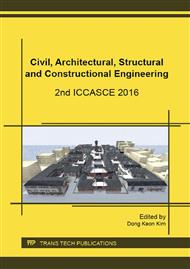p.312
p.319
p.325
p.335
p.342
p.348
p.354
p.359
p.366
Stability Evolution with Basal Erosion Increase in Cliffs on the Coast of Rio Grande do Norte, Brazil
Abstract:
The coastline is constantly in undergoing change, in terms of its position (retreat) and form. The retreat of coastal cliffs is a physical, dynamic and complex process that is controlled mainly by the geology of the area, strength properties of materials, marine conditions and climatic aspects of the region. This process is directly related to basal erosion, which is basically the mechanical destruction and/or removal of soil particles from the toe of coastal cliffs, caused mainly by wave action. Basal cliff erosion decreases the stability of the slope and may trigger mass movements and coast retreats. The coastal area of Rio Grande do Norte (Brazil) consists predominantly of sandy beaches and cliffs of Barreiras Formation. In this area, the human occupation has been increasing; therefore, it potentiates the probability of occurrence of mass movement. The objective of this study is to analyze the direct influence of basal erosion on stability of typical cliffs of the district of Tibau do Sul / Rio Grande do Norte - Brazil. The results showed that tensions are generated above the basal erosion as notch extension increases.
Info:
Periodical:
Pages:
342-347
Citation:
Online since:
November 2016
Keywords:
Price:
Сopyright:
© 2017 Trans Tech Publications Ltd. All Rights Reserved
Share:
Citation:


